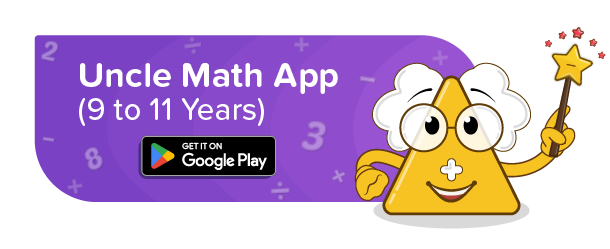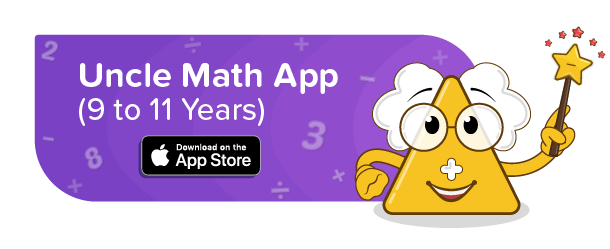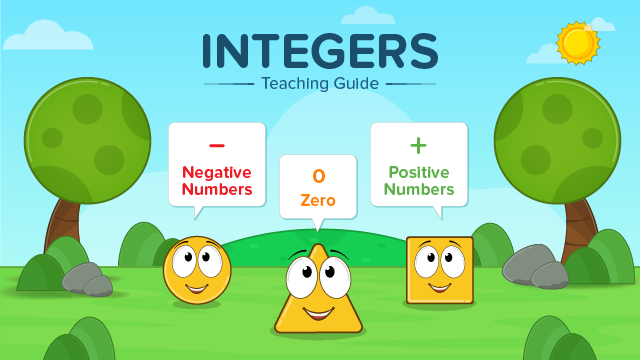
In Latin, the word “integer” (which means “whole” or “intact”) denotes “intact.” As a result, all whole numbers as well as negative numbers devoid of fractions and decimals are considered integers. Numbers that may be written without a fractional component are known as integers. They could be zero, positive, or negative.
When we go food shopping, balance our chequebooks, check the weather, and do other tasks, we use these numbers. They are all around us!
Types Of Integers
Integers can be classified into 3 types, namely positive, negative, and zero types.
Zero : An integer zero has neither a positive nor a negative value. 0 is written without any positive or negative signs, just as it sounds.
Positive : These are naturally occurring counting numbers that are greater than zero. Examples include 1, 2, 3, 4, 5, 6, 7, etc. are examples.
Negative : An integer having a value less than 0 is considered a negative integer. Examples include -1, -2, -3, -4, -5, -6, etc. are examples.

Integers On Number Line
- All three types can be represented on the number line. 0 is always marked in the centre, while negative are marked on the left and positive on the right.
- The values of them increase as you move from left to right.
- The bigger the positive integer, the bigger its value.
- The smaller the negative integer, the bigger its value.
- All positive integers are always greater than negative integers.

Operations With Integers
All four types of operations can be carried out on integers, namely addition, subtraction, multiplication, and division by following some general rules.
Addition :
- The addition can be carried on by following these rules.
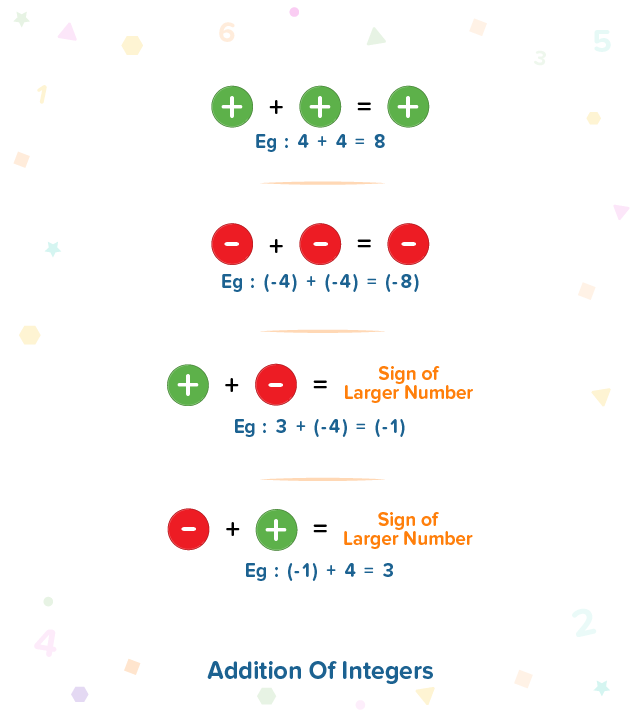
Subtraction :
- Subtraction can be carried on by following these rules.

Multiplication :
- Multiplying and dividing these numbers are identical operations. Since the result of multiplying or dividing with the “same sign” will be positive. When “opposite signs” are multiplied or divided, the outcome is negative. Let’s examine several illustrations :
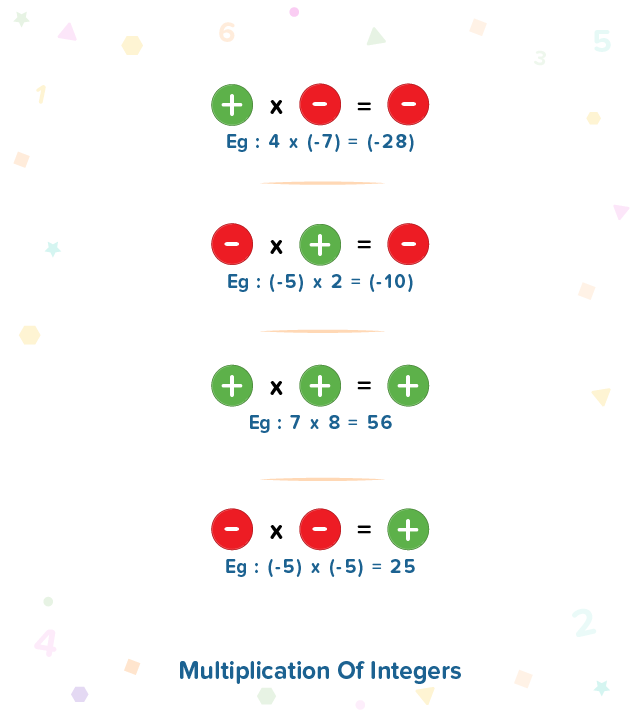
Division :
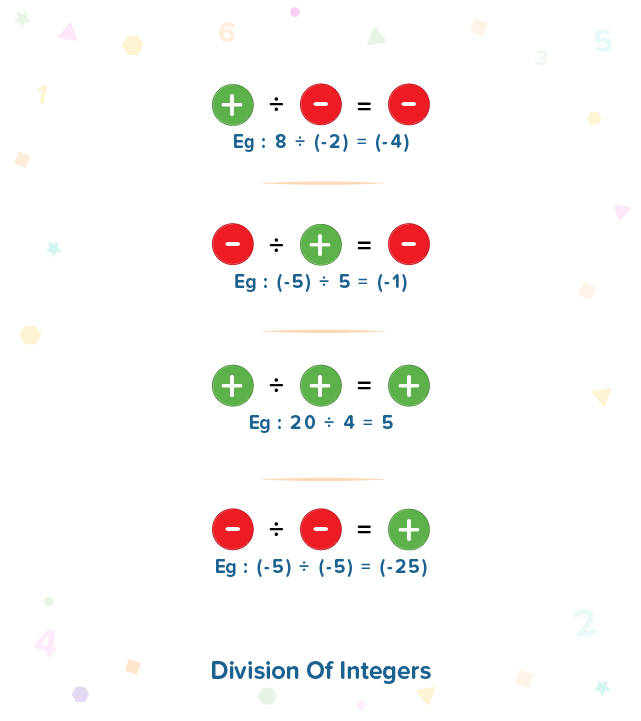
Teaching integers with kid-friendly, clear, and easy-to-understand posters from Uncle Math School by Fun2Do Labs :
Ignite kids’ curiosity with engaging stories for role play and skits, making the learning of this concept an exciting and effective experience. Teaching integers through stories from Uncle Math School by Fun2Do Labs :
Learning integers can be made enjoyable by incorporating interactive games and activities.
- Give children some blocks, and then instruct them to make various integer sequences.
- For example, instruct learners to arrange three positive and two negative integers before adding them all up.
- This exercise teaches children that adding positive and negative integers can provide varying results.
Help your kids practise integers with interesting and engaging fun worksheets and solutions from Uncle Math by Fun2Do Labs.



